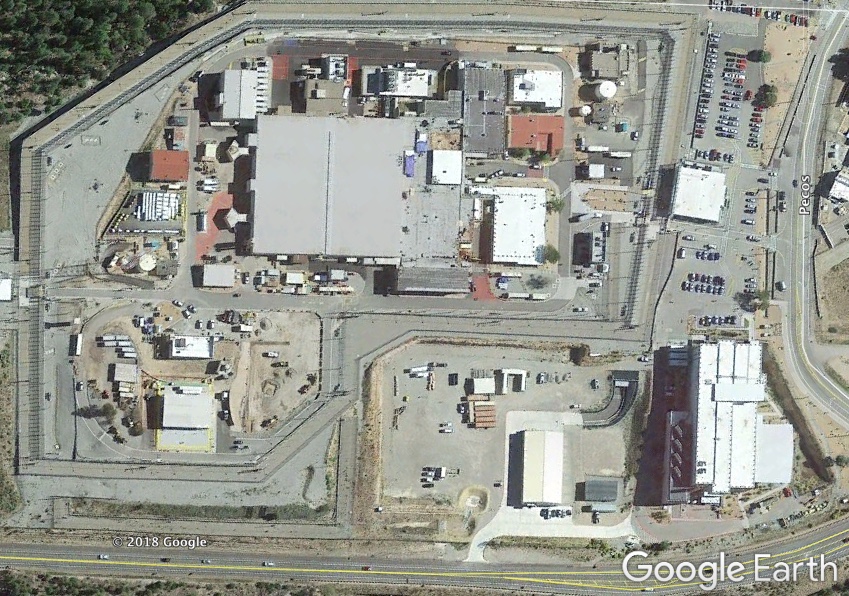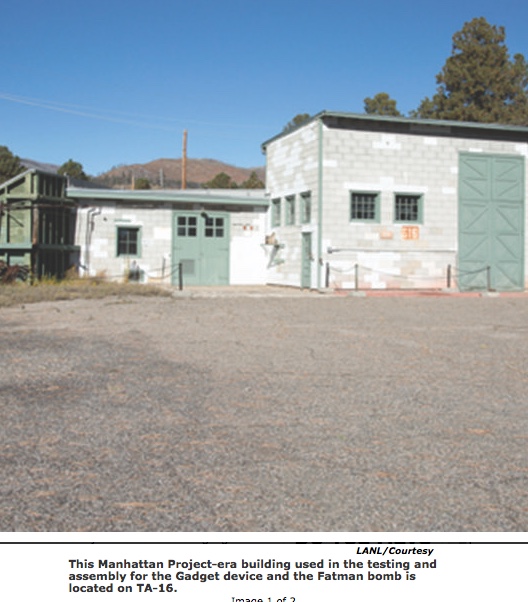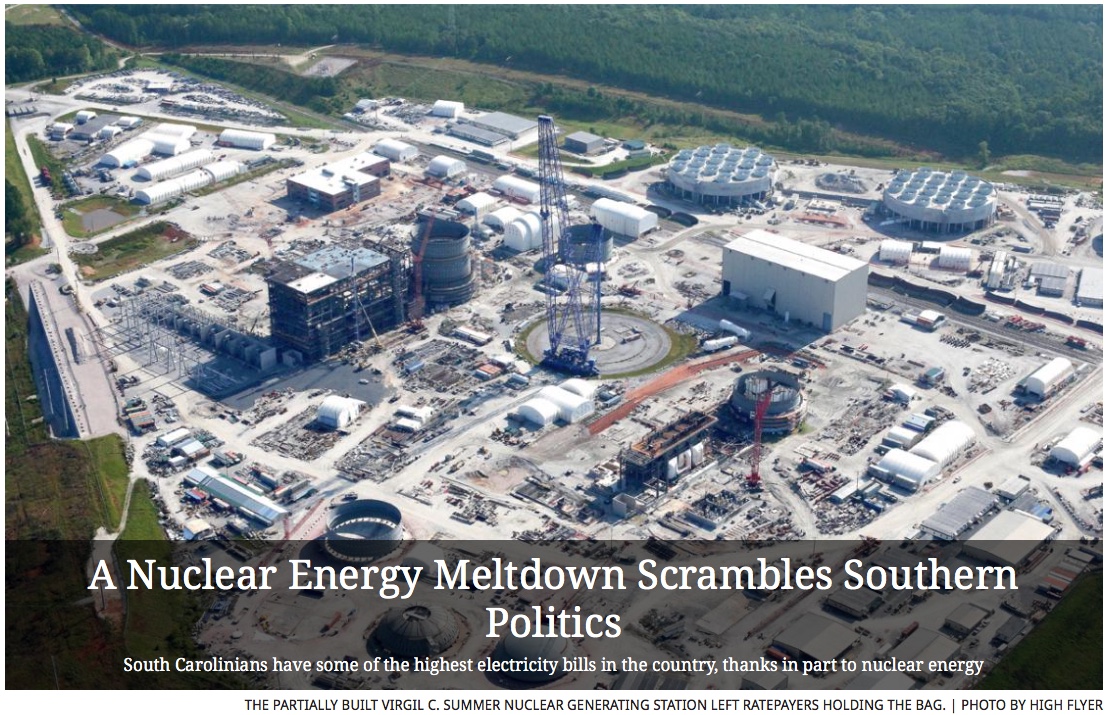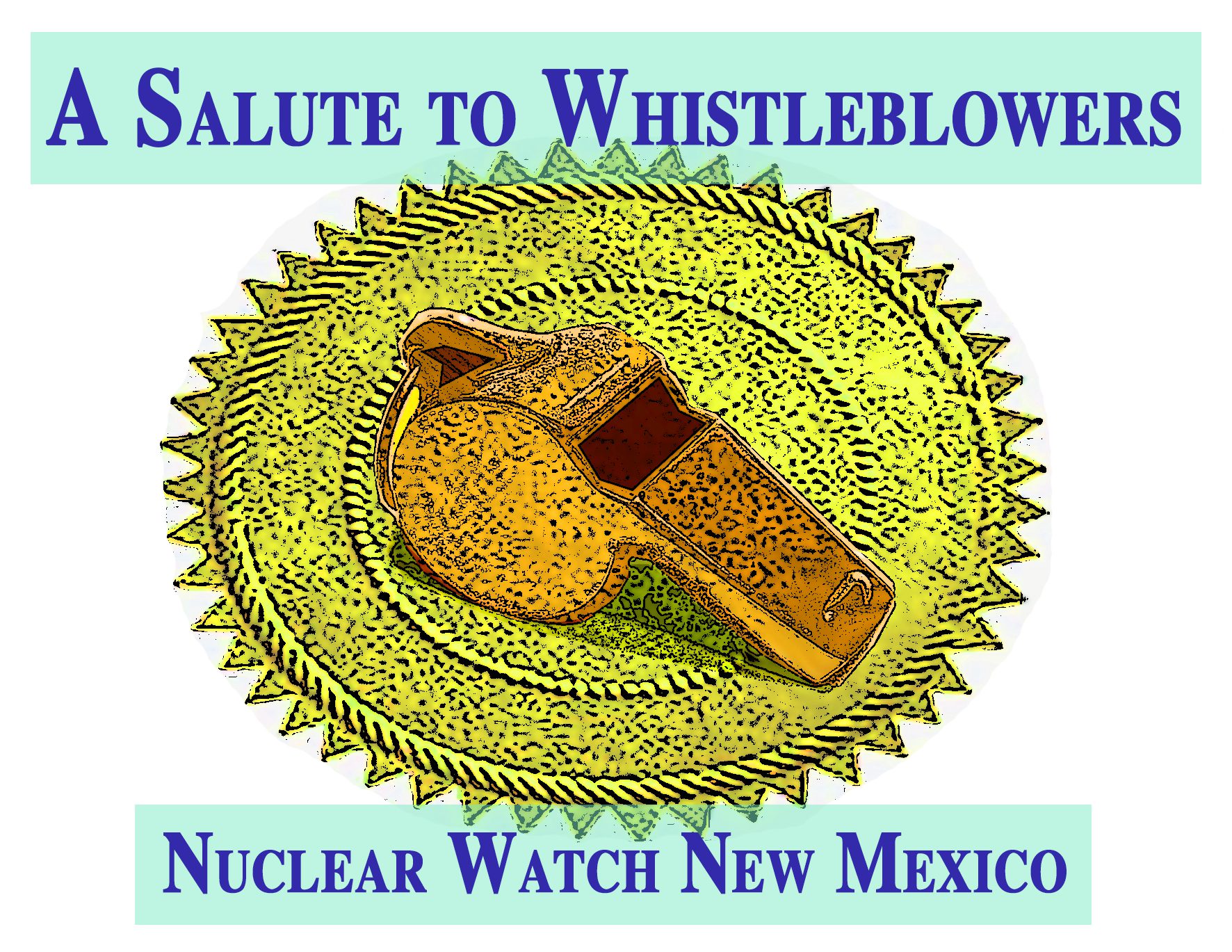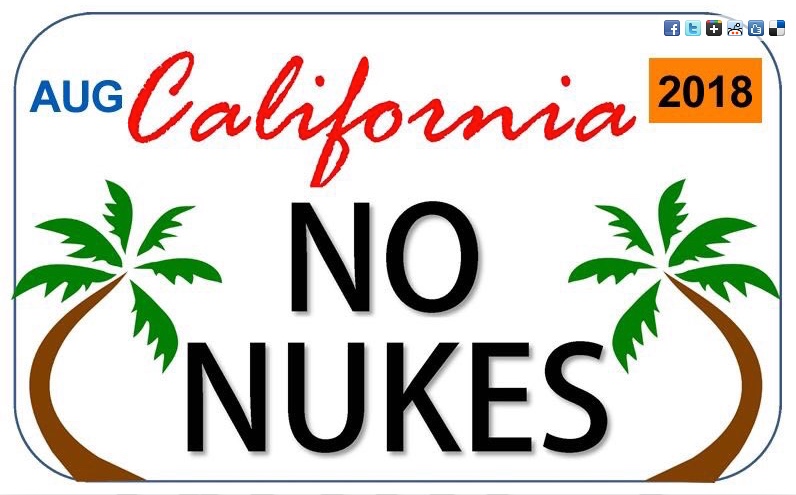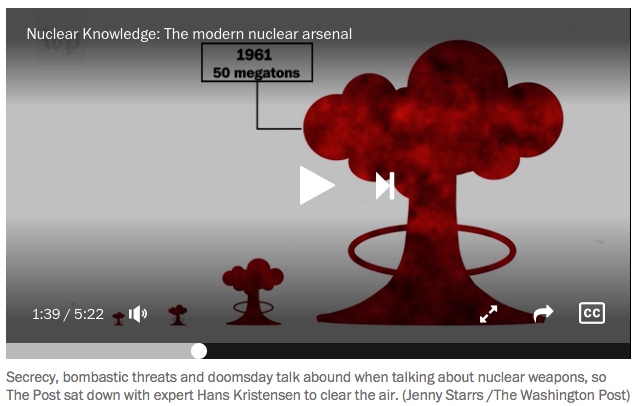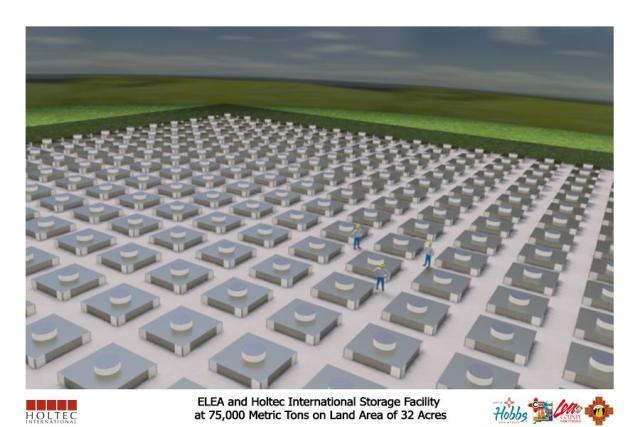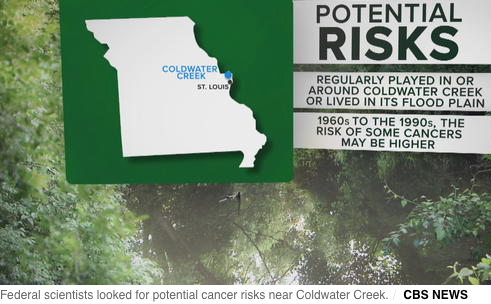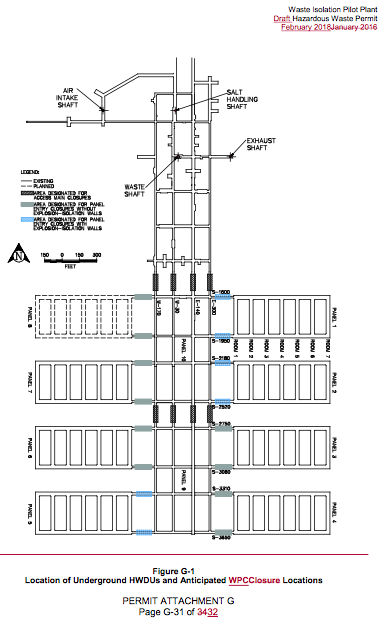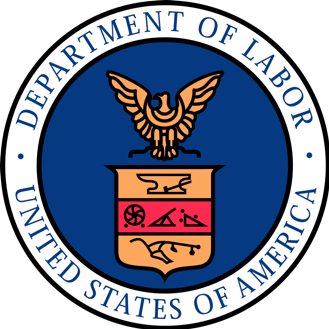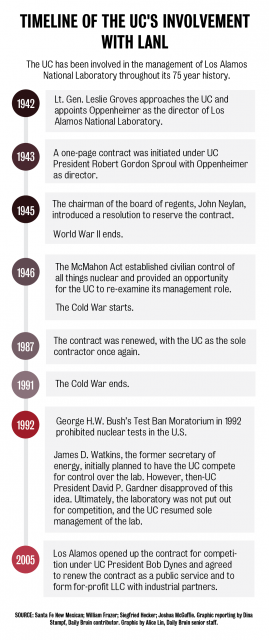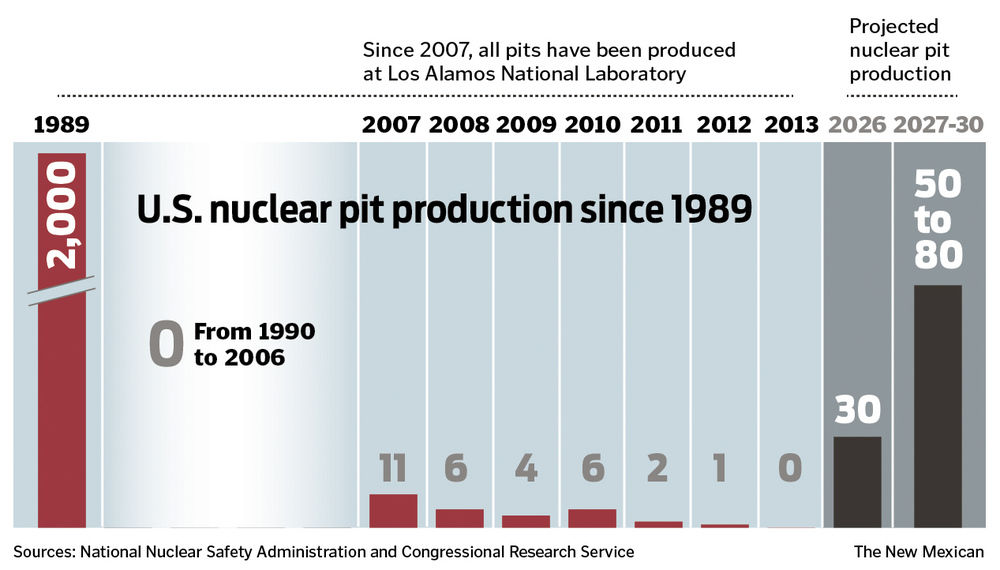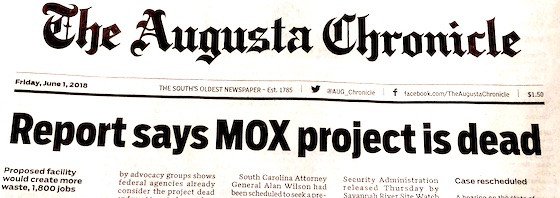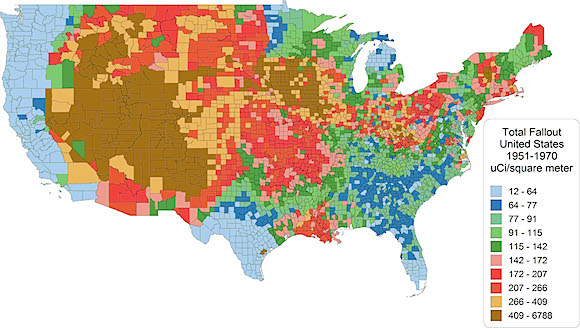2023 News Articles – All Posts
Nothing Found
It seems we can’t find what you’re looking for. Perhaps searching can help.
2022 Select Highlighted Press Items
Nuclear Modernization is the ’Absolute Minimum,’ STRATCOM Commander Says | March 8, 2022
US tested hypersonic missile in mid-March but kept it quiet to avoid escalating tensions with Russia | April 4, 2022
Putin’s Nuclear Threats Are a Wake-Up Call for the World | March 15, 2022
Intelligence report determines that Russia's WMD threats will grow as losses mount in Ukraine | March 19, 2022
China and the United States: It’s a Cold War, but don’t panic | March 10, 2022
Russian military doctrine calls a limited nuclear strike “de-escalation.” Here’s why. | March 8, 2022
North Korea says it will strike with nuclear weapons if South attacks | April 4, 2022
Flying Under The Radar: A Missile Accident in South Asia | April 4, 2022
2022 News Articles
New Mexico Environment Department Conducts Hearing On LANL Groundwater Discharge Permit In Los Alamos
BY MAIRE O’NEILL thelosalamosreporter.com
A public hearing being conducted by the New Mexico Environment to consider the ground water discharge permit for Los Alamos National Laboratory headed into its second day Thursday in the Los Alamos Magistrate Courtroom.
On Wednesday, public comment was heard throughout the day from members of the public, tribal representatives, public officials and watchdog groups such as Nuclear Watch New Mexico.
Colorado Wildlife Refuge Opens at Former Nuclear Weapons Plant Amid Controversy
BY PAM WRIGHT weather.com
FORMER COLORADO THERMONUCLEAR PARTS PLANT NOW A WILDLIFE REFUGE
The U.S. Fish and Wildlife Service opened the gates of Rocky Flats National Wildlife Refuge on Sept. 15 near a former Environmental Protection Agency superfund site which used to house a plant that manufactured plutonium triggers for nuclear bombs for nearly four decades, the Associated Press reports.
Mikhail Gorbachev: A New Nuclear Arms Race Has Begun
Illustration by Delcan & Company; Photograph by Dennis Cook, via Associated Press
BY MIKHAIL GORBACHEV nytimes.com
Mr. Gorbachev is the former president of the Soviet Union.
Over 30 years ago, President Ronald Reagan and I signed in Washington the United States-Soviet Treaty on the elimination of intermediate- and shorter-range missiles. For the first time in history, two classes of nuclear weapons were to be eliminated and destroyed.
This was a first step. It was followed in 1991 by the Strategic Arms Reduction Treaty, which the Soviet Union signed with President George H.W. Bush, our agreement on radical cuts in tactical nuclear arms, and the New Start Treaty, signed by the presidents of Russia and the United States in 2010.
There’s no such thing as a perfect nuclear arms deal. Trump doesn’t get that.
We have them to reduce the chances of catastrophe.
President Ronald Reagan and Soviet leader Mikhail Gorbachev at the Intermediate-range Nuclear Forces Treaty signing ceremony in the White House on Dec. 8, 1987. (Bob Daugherty/AP)BY ALEXANDRA BELL The Washington Post
When President Trump walked away from the 2015 Iran nuclear deal — the Joint Comprehensive Plan of Action or JCPOA — he called it “disastrous,” saying that at “the heart of the Iran deal was a giant fiction that a murderous regime desired only a peaceful nuclear energy program.”
He had long complained the agreement was “the worst deal ever negotiated,” and that he could get a better one. This week, the president found a new target in the 1987 Intermediate-range Nuclear Force Treaty or INF, an agreement that helped diffuse Cold War nuclear tensions on the European continent by obligating the United States and Russia to eliminate all land-based missiles with ranges between a few hundred and a few thousand miles. On the sidelines of a political rally, Trump said “Russia has violated the agreement,” and added “I don’t know why President Obama didn’t negotiate or pull out.”
If his point is that these agreements are less than ideal, he’s right. What he doesn’t seem to get is that there’s no such thing as a perfect nuclear deal. Continue reading
Terminating the INF Treaty Could Be Disastrous
BY DEREK JOHNSON cnn.com
Derek Johnson is the executive director of Global Zero, the international movement for a world without nuclear weapons.
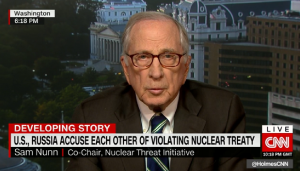
This was probably the first time most folks had ever heard of this Reagan-era arms control agreement that helped end the Cold War and kept Europe stable for a generation. Which may explain why the American public is not yet reacting to this disaster with the level of panic it deserves.
It’s tempting to think of treaties as little scraps of paper collecting dust on a historian’s bookshelf. Interesting, if you’re into that sort of thing, but largely irrelevant. The INF Treaty is something else entirely: This scrap of paper is a powerful leash, one of the few things restraining Russia and the United States (which together hold around 92% of the world’s nuclear weapons) from arms-racing us all into oblivion.
George Shultz: We Must Preserve This Nuclear Treaty
BY GEORGE P. SHULTZ nytimes.com
Mr. Shultz was a secretary of state in the Reagan administration.
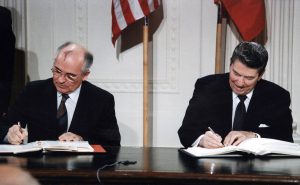
Nuclear weapons are a threat to the world. Any large-scale nuclear exchange would have globally catastrophic consequences. Conscious of this reality, President Ronald Reagan and Mikhail Gorbachev, the leader of the Soviet Union, worked in the 1980s to reduce the number of nuclear weapons, with the ultimate goal of getting rid of them.
The Intermediate-Range Nuclear Forces Treaty, signed in 1987, was a major step toward this goal, eliminating a large class of nuclear weapons that were viewed as particularly destabilizing. The treaty is still in force, although both the Obama and Trump administrations have said that Russia is in violation. Whatever the case, we need to preserve the agreement rather than abandon it, as President Trump has threatened to do.
Watchdog groups seek review of plutonium plan
Andy Stiny | The Santa Fe New Mexican
Three nuclear watchdog groups across the U.S., including Santa Fe-based Nuclear Watch New Mexico, are accusing the National Nuclear Security Administration of creating a plan to increase production of plutonium bomb cores in violation of an environmental law.
Nuclear Ban Treaty Could Come Into Force in 2019, Campaigners Say
OCTOBER 28, 2018 / 5:12 PM
Tom Miles
REUTERS WORLD NEWS
GENEVA (Reuters) – A treaty banning nuclear weapons could come into force by the end of 2019, backers of a campaign that won the 2017 Nobel Peace Prize said in an annual progress report on Monday.
The treaty aims to stigmatize nuclear weapons as previous treaties marginalized landmines and cluster munitions. Signatories promise to reject nuclear strategies and encourage others to follow suit.
The Nuclear Weapons Ban Monitor, published by Norwegian People’s Aid, said 19 states had already adhered to the 2017 Treaty on the Prohibition of Nuclear Weapons, putting it well on the way to the 50 ratifications it needs to come into force.
George Shultz: We Must Preserve This Nuclear Treaty
BY GEORGE P. SHULTZ nytimes.com
Mr. Shultz was a secretary of state in the Reagan administration.
Mikhail Gorbachev and Ronald Reagan signing the Intermediate-Range Nuclear Forces Treaty at the White House in 1987. Universal History Archive/UIG, via Getty ImagesNuclear weapons are a threat to the world. Any large-scale nuclear exchange would have globally catastrophic consequences. Conscious of this reality, President Ronald Reagan and Mikhail Gorbachev, the leader of the Soviet Union, worked in the 1980s to reduce the number of nuclear weapons, with the ultimate goal of getting rid of them.
The Intermediate-Range Nuclear Forces Treaty, signed in 1987, was a major step toward this goal, eliminating a large class of nuclear weapons that were viewed as particularly destabilizing. The treaty is still in force, although both the Obama and Trump administrations have said that Russia is in violation. Whatever the case, we need to preserve the agreement rather than abandon it, as President Trump has threatened to do.
WIPP: Waste Calculation Change Discussed
BY ADRIAN C. HEDDEN, Carlsbad currentargus.com
WIPP:
“Calculation change will not impact facility’s capacity”
[We at NukeWatch do believe that this proposed change WILL expand WIPP’s capacity and are working hard to stop it.]
Officials at the Waste Isolation Pilot Plant said a proposed modification to facility’s permit to dispose of nuclear waste will have little impact on WIPP operations or its maximum capacity for emplacement. The modification regards how the facility tracks the volume of transuranic (TRU) waste permanently stored in the underground repository.
Atomic Bomb Survivors Urge Trump Not To ‘Turn Clock Back’
BY AI TANABE, Staff Writer The Asahi Shimbun
Hibakusha atomic bomb survivors admonished U.S. President Donald Trump for threatening to walk away from the Intermediate-range Nuclear Forces (INF) treaty in a protest letter sent to the U.S. Embassy in Tokyo on Oct. 22. The note, addressed in Japanese to the commander-in-chief, was compiled by five hibakusha groups in Nagasaki expressing their concerns over the proposed withdrawal from the 1987 treaty signed by the United States and the Soviet Union.
The groups stated that if the United States pulls out of the treaty, “global momentum for nuclear disarmament will fade away while the likelihood of a nuclear war crisis will rise.”
Feds Test Aquifer for Contamination of RDX
THE LOS ALAMOS MONITOR ONLINE
Feds Test Regional Aquifer for More LANL Contamination of High Explosives
Monday, October 22, 2018
Chemicals used to make high explosives have reached the regional water supply, the Los Alamos federal environmental manager discovered two years ago.
The contractor for the Department of Energy’s Environmental Management field office is drilling a second well to find out just how much contamination has occurred.
Critics: WIPP proposal would allow more nuclear waste storage
Critics: WIPP proposal would allow more nuclear waste storage
By Rebecca Moss | sfnewmexican.com
Sep 19, 2018 Updated Sep 19, 2018
As the public comment period closes Thursday on modifications to a state permit allowing the federal government to store nuclear waste at a southeastern New Mexico repository, critics are decrying the changes as an effort to increase storage capacity at the site and are accusing the state Environment Department of rushing the approval process.
The U.S. Department of Energy and Nuclear Waste Partnership LLC, a private contractor that manages the Waste Isolation Pilot Plant in Carlsbad, submitted a request early this year to change the way radioactive waste at the site is measured.
They want to measure the waste by the volume inside each waste drum rather than by the total number of containers at the site. WIPP can store a maximum of 6.2 million cubic feet of transuranic waste — discarded tools, soil and equipment contaminated by plutonium and other radioactive materials — in its underground salt-bed caverns. But its capacity has been measured so far by the total volume of the waste drums, not the materials held inside them.
Mini-nukes: Still a horrible and dangerous idea
Mini-nukes: Still a horrible and dangerous idea
By John Mecklin, September 19, 2018
Bulletin of the Atomic Scientists
Perhaps the most dangerous weapons program the US government has recently pursued involves a low-yield nuclear warhead for submarine-launched nuclear missiles. The arguments against development of such “small nukes” are legion and overwhelmingly compelling. In fact, almost exactly one year ago, I laid out some of those arguments in an article headlined, “Mini-nukes: The attempted resurrection of a terrible idea.” And, I said then, don’t just take my word for it; read the analysis of Jim Doyle, a former longtime technical staffer at the Los Alamos National Laboratory. Simply put, the availability of “small” nuclear warheads increases the likelihood that nuclear weapons will be used, and any use of nuclear weapons easily could (some experts might say “inevitably would”) lead to general nuclear war and the end of civilization.
In the last year, however, the Trump administration released a Nuclear Posture Review calling for development of a low-yield warhead for submarine-launched ballistic missiles. Congress subsequently passed a defense authorization act that includes money for the program, and another bill allocates millions in the Energy Department budget specifically for pursuit of the new warhead.
A September 11th Catastrophe You’ve Probably Never Heard About
In 1957, America narrowly averted a nuclear meltdown at the Rocky Flats plant in Colorado. A new book explores how close we all came to disaster.
ANDREW COHEN | theatlantic.com
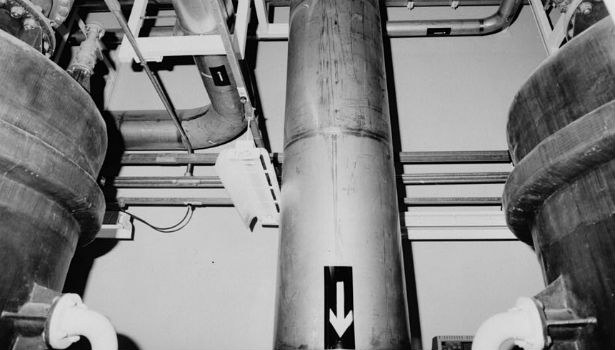
New Mexico Senators Speak Out Over Order They Say Would Hamper Nuclear Safety Board
New Mexico Senators Speak Out Over Order They Say Would Hamper Nuclear Safety Board
They want Congress to suspend a move that would limit access to information about facilities and could hinder the panel’s ability to oversee worker health and safety.
by Rebecca Moss, Santa Fe New Mexican,
Aug. 31, 5 a.m. EDT
This article was produced in partnership with The Santa Fe New Mexican, which is a member of the ProPublica Local Reporting Network.
New Mexico’s senators are asking Congress to block a Department of Energy order that would limit a federal board’s access to information about nuclear facilities and could hinder its ability to oversee worker health and safety.
In a letter sent Wednesday to the leaders of a Senate appropriations subcommittee, Democratic Sens. Martin Heinrich and Tom Udall also asked their colleagues to block impending staff cuts and a broad reorganization at the Defense Nuclear Facilities Safety Board. New Mexico is home to three of the 14 nuclear facilities under the board’s jurisdiction: Los Alamos National Laboratory, Sandia National Laboratories and the Waste Isolation Pilot Plant.
“We feel strongly that these two matters facing the [safety board] and its future must be suspended while Congress and the public have time to review and offer constructive feedback” on how to maintain and improve the board, the senators wrote to Sens. Lamar Alexander, R-Tenn., and Dianne Feinstein, D-Calif., the chairman and ranking member of the energy and water development subcommittee.
The West’s atomic past, in opera halls
The West’s atomic past, in opera halls
On stage and in Congress, Trinity test downwinders fight for recognition.
Elena Saavedra Buckley, High Country News, Aug. 30, 2018
Outside the Santa Fe Opera, a 62-year-old venue nestled in juniper-covered hills, retirees reclined by cloth-covered tables in the parking lot. As the August heat reflected off the asphalt, they tailgated with flutes of champagne. Soon, they would file in to see Doctor Atomic, an opera about physicist J. Robert Oppenheimer and the 24 hours before the first atomic bomb, which he helped create, detonated over New Mexico’s Tularosa Basin in the Trinity test.
Doctor Atomic has been performed in New York and San Francisco, but never before in New Mexico, where Manhattan Project scientists from Los Alamos Laboratory created the bomb. John Adams composed the opera in 2005, and Peter Sellars’s libretto uses declassified Los Alamos documents, focusing on the scientists’ perspective. This was the first time that downwinders — people whose families lived in the Tularosa Basin, in the path of the bomb’s radiation — appeared on stage during a performance. This summer, 73 years after Trinity, New Mexico’s downwinders are finally receiving some attention — onstage and in Congress.
The Trinity test occurred at 5:30 a.m. on July 16, 1945, about 150 miles south of Santa Fe and the laboratory and only weeks before the bombings in Japan. It bathed the basin in light, creating a half-mile-wide crater. The Tularosa Basin Downwinders believe that blast’s radiation gave their families cancer, either from the air or through milk and produce, and that the diseases are being passed down genetically.
Trump Administration Muzzles Nuclear Weapons Safety Watchdog
Trump Administration Muzzles Nuclear Weapons Safety Watchdog
The administration, working in open alliance with profit-making contractors, is scaling back the safety group’s authority and slashing its staff.
Center For Public Integrity
08.30.18 6:00 AM ET
By Patrick Malone, Center for Public Integrity
A small government safety organization tasked with protecting the workers who construct America’s nuclear arsenal and with preventing radioactive disasters in the communities where they live is under new siege in Washington.
The Trump administration, acting in an open partnership with the profit-making contractors that control the industrial sites where U.S. nuclear bombs are made and stored, has enacted new rules that limit the authority and reach of the Defense Nuclear Facilities Safety Board, created by Congress in 1988 amid broad public concerns over civil and military nuclear safety lapses.
The administration’s new rules eliminate the board’s authority to oversee workplace protections for roughly 39,000 nuclear workers and also block its unfettered access to nearly three-quarters of the nuclear weapons-related sites that it can now inspect.
In a separate move, the board’s new acting Republican chairman has proposed to put more inspectors in the field but to cut its overall staff by nearly a third, including letting some of its supporting technical experts in Washington go. The board already has one of the smallest oversight staffs of any federal agency.
The twin assaults on the operations and authority of the safety board come just as the Energy Department, acting at President Trump’s direction, is embarking on the most aggressive era of nuclear weapons production since the Cold War. Trump has called for one new nuclear bomb to be produced immediately and for the production of another new bomb to be studied.
A Nuclear Energy Meltdown Scrambles Southern Politics
A Nuclear Energy Meltdown Scrambles Southern Politics
South Carolinians have some of the highest electricity bills in the country, thanks in part to nuclear energy
BY ANDREA COOPER | AUG 30 2018
REVEREND LEO WOODBERRY CLUTCHED the pulpit, his voice rumbling toward the people gathered in the basement theater at Little Rock AME Zion church. Around 75 men and women wearing everything from stylish dresses to blue jeans and T-shirts sat in rapt attention.
“Talk to your friends,” Woodberry implored, wearing a “Justice First” T-shirt and a baseball hat. “Your neighbors, your commissioners, your mayors. Tell them we are ready right now to move away from fossil fuels. We’re ready to make our cities 100 percent renewable!”
People clapped, whistled, and cheered “Yes!” and “Amen!”
Woodberry was on his Justice First Tour in Charlotte, North Carolina, 100 miles from his home in Florence, South Carolina. The environmental activist had come here to proclaim that the moment had arrived for the climate change, women’s rights, immigrants’ rights, criminal justice reform, and marriage equality movements to unite for a common cause: opposing an extractive economy “based on death and destruction and sickness.”
That same economy is responsible for an unprecedented energy and financial disaster in Woodberry’s home state: A $9 billion nuclear project—once heralded as part of a U.S. nuclear revival—has been abandoned after years of delays and mismanagement. One of the South Carolina utilities responsible for the colossal failure has billed its customers $37 million each month to recoup costs.
A Salute to Whistleblowers – Mark your calendar! Sept. 25 at 7pm at CCA
|
The US Government Is Updating Its Nuclear Disaster Plans And They Are Truly Terrifying
The US Government Is Updating Its Nuclear Disaster Plans And They Are Truly Terrifying
“We are looking at 100 kiloton to 1,000 kiloton detonations,” a FEMA official said.
Dan Vergano BuzzFeed News Reporter
Reporting From Washington, DC
Posted on August 24, 2018, at 11:59 a.m. ET
Amid concerns over North Korea, federal emergency managers are updating disaster plans to account for large nuclear detonations over the 60 largest US cities, according to a US Federal Emergency Management Agency official.
The shift away from planning for small nuclear devices that could be deployed by terrorists toward thermonuclear blasts arranged by “state actors” was discussed on Thursday at a two-day National Academies of Sciences workshop for public health and emergency response officials held at its headquarters across the street from the US State Department.
“We are looking at 100 kiloton to 1,000 kiloton detonations,” chief of FEMA’s chemical, biological, radiological, and nuclear branch Luis Garcia told BuzzFeed News. The agency’s current “nuclear detonation” guidance for emergency planners, first released in 2010, had looked at 1 to 10 kiloton blasts — smaller than the 1945 Hiroshima and Nagasaki atomic bombs that killed more than 200,000 people at the end of World War II. Those smaller size detonations had seemed more reasonable after 9/11, with high concerns about an improvised terrorist bomb.
CALIFORNIA LEADS THE WAY IN SUPPORT OF NUCLEAR DISARMAMENT
California State Legislature Passes Pro-Nuclear Disarmament Resolution
Sacramento–Assembly Joint Resolution 33 (AJR 33), introduced by Santa Barbara’s State Assembly member, Monique Limón, passed in the state Senate today by a vote of 22 to 8. This marks a huge step forward in California’s support of nuclear disarmament and puts the state at the forefront of this critical issue.
The resolution calls on federal leaders and our nation to embrace the Treaty on the Prohibition of Nuclear Weapons, make nuclear disarmament the centerpiece of our national security policy, and spearhead a global effort to prevent nuclear war. (More on the Treaty here.)
Rick Wayman, Deputy Director of the Nuclear Age Peace Foundation, a non-partisan, non-profit organization headquartered in Santa Barbara whose mission is to create a peaceful world, free of nuclear weapons, was asked by Limón to testify in support of the Resolution.
The modern nuclear arsenal: A nuclear weapons expert describes a new kind of Cold War
The modern nuclear arsenal: A nuclear weapons expert describes a new kind of Cold War
Nuclear Knowledge: The modern nuclear arsenal
https://www.washingtonpost.com/video/politics/nuclear-knowledge-the-modern-nuclear-arsenal/2018/08/20/9d370fec-a0b8-11e8-a3dd-2a1991f075d5_video.html
Secrecy, bombastic threats and doomsday talk abound when talking about nuclear weapons, so The Post sat down with expert Hans Kristensen to clear the air. (Jenny Starrs /The Washington Post)
By Jenny Starrs
August 24 at 7:00 AM
With the flurry of talks with North Korea and the fallout from the U.S. withdrawal from the Iran nuclear deal, nuclear weapons have become a major topic of discussion in recent months. But secrecy abounds: Who has what weapons? How many? How much damage could they do?
Hans Kristensen tries to answer those questions. As the director of the Nuclear Information Project at the Federation of American Scientists, Kristensen and his colleagues delve into open source data, analyze satellite imagery and file requests under the Freedom of Information Act to get the most accurate picture of the world’s nuclear-armed countries. The initiative produces reports on nuclear weapons, arms control and other nuclear matters, and gives recommendations on how to reduce the role and number of nuclear weapons worldwide.
Kristensen sat down with The Washington Post to discuss how the United States’s nuclear capabilities stack up with the rest of the world, and potential problems down the road. The questions and answers have been edited for brevity.
New Los Alamos lab manager Triad will pay Gross Receipts Tax
New Los Alamos lab manager Triad will pay GRT, official says
By Andy Stiny | astiny@sfnewmexican.com
Aug 22, 2018 Updated 16 hrs ago
A representative of Triad National Security LLC, which takes over management of Los Alamos National Laboratory in November, said Wednesday the consortium will pay gross receipts taxes, easing concerns of local officials about losing millions of dollars in revenue.
Scott Sudduth, assistant vice chancellor with the Office of Federal Relations for the Texas A&M University system, told an audience of about 50 community members during a meeting in Los Alamos that the New Mexico Taxation and Revenue Department responded to a recent inquiry from Triad by saying that “it is their view that the gross receipts tax does apply to Triad.”
Los Alamos County officials had said previously that if Triad were deemed to have nonprofit status, the county estimated it could lose $21 million annually and the state $23 million in gross receipts tax revenues, according to published reports.
State could block proposed nuclear storage site near Carlsbad
State could block nuclear storage site near Carlsbad even if federally licensed
By Adrian C. Hedden / Carlsbad Current-Argus, N.M. (TNS)
State lawmakers maintained they will have a say in a proposed facility to store high-level nuclear waste near Carlsbad and Hobbs, despite an opinion issued by New Mexico Attorney General Hector Balderas suggesting New Mexico will have a limited role in licensing the project.
New Mexico Sen. Jeff Steinborn (D-36), who chairs the New Mexico Radioactive and Hazardous Waste Committee said Balderas’ opinion was informative but did not preclude lawmakers from preventing the facility from operating.
The committee convened in May to study the project proposed by New Jersey-based Holtec International, and held its third meeting on Wednesday at University of New Mexico-Los Alamos.
Opposed to the project, Steinborn said state lawmakers owe their constituents a full review of the proposal.
“I think it’s kind of a troubling deficiency in the government if the state doesn’t have to give consent to have something like this foisted upon it,” he said. “The State of New Mexico owes it to the people to look at every aspect of it.”
Katzman Tells Utilities Board RDX Never Detected In County Water Supply Wells
Danny Katzman gave his punchline first Tuesday evening at the Nov. 20 Los Alamos County Board of Public Utilities meeting where he gave a presentation on Royal Demolition Explosive (RDX) contamination from Los Alamos National Laboratory. Katzman is the Technical Programs Manager for N3B, the Lab’s legacy waste cleanup contractor.
By: MAIRE O’NEILL | losalamosreporter.com November 24, 2018
“RDX has never been detected in the County’s water supply wells. It’s nowhere near the County water supply wells and it’s every intent of the Department of Energy and N3B to ensure that never becomes the case,” Katzman said.
In introducing Katzman, Utilities Manager Tim Glasco said DOE revealed in a meeting with the County Council as part of an overall presentation on groundwater protection and other environmental activities going on at LANL that they were following an RDX contamination vent out at the Lab. He said there was some citizen concern and concern by some County Council members about the extent of that contamination and whether or not it was a threat, specifically to the County’s drinking water wells. Glasco said he met with DOE Environmental Management and N3B and that it became apparent that “it’s a fairly complex situation out there” so he requested that N3B make a presentation to the board.
Trinity site cancer study expected to finish in 2019
- By Russell Contreras | Associated Press
- Updated
ALBUQUERQUE — A long-anticipated study into the cancer risks of New Mexico residents living near the site of the world’s first atomic bomb test likely will be published in 2019, the National Cancer Institute announced.
Institute spokesman Michael Levin told the Associated Press that researchers are examining data on diet and radiation exposure on residents who lived near the World War II-era Trinity test site, and scientists expect to finish the study by early next year.
Federal health officials agree radioactive waste in St. Louis area may be linked to cancer
The federal government confirms some people in the St. Louis area may have a higher risk of getting cancer. A recent health report found some residents who grew up in areas contaminated by radioactive waste decades ago may have increased risk for bone and lung cancers, among other types of the disease. The assessment was conducted by the Agency for Toxic Substances and Disease Registry, a branch of the U.S. Centers for Disease Control and Prevention.
As CBS News correspondent Anna Werner reports, the situation is not unique to St. Louis because it’s connected to America’s development of its nuclear weapons program decades ago. Radioactive wastes persist in soils, and many believe that’s why they or a loved one developed cancer. Now for the first time, federal health officials agree, on the record, that’s a real possibility.
Read More
Hiroshima’s Children
With a gift of art supplies, children who survived the bombings drew visions of joy
Pictures from a Hiroshima Schoolyard is a 52-minute documentary produced by Shizumi Shigeto Manale and written and directed by Bryan Leichhardt.
NMED Announces Comment Period For WIPP Permit Modification to Change Waste Volume Accounting
In an example of Now-You-See-It-Now-You-Don’t, the NM Environment Department (NMED) is proposing to change their method of measuring waste emplaced into the underground at WIPP. This would would allow 30% more waste into WIPP than is currently allowed. This sleight of hand would be accomplished by not counting the outer-most container of waste packages in the future. This proposal is one piece of a larger plan to bring more waste to WIPP. New Mexicans have already taken enough of the nation”s radioactive waste. More waste increases the the chance of serious accidents leading to dangerous contamination.
Comments are currently due September 20, 2018 at 5pm, but this deadline ridiculously short. Please join us when we ask for an extension.
We will soon post some sample comments and will give updates as soon as NMED posts the Permit Modification online.
See the Notice here – WIPP Class 3 VOR Notice
Twelve Members Appointed to Advisory BoardFocused on Health of Nuclear Weapons Workers
WASHINGTON, DC
The U.S. Department of Labor has announced 12 appointees to the Advisory Board on Toxic Substances and Worker Health for the Energy Employees Occupational Illness Compensation Program Act (EEOICPA).
New NNSA complex near Kirtland gets green light
Construction on a new complex has been authorized by the U.S. Department of Energy’s National Nuclear Security Administration to replace 25 aged and dilapidated buildings currently located near Kirtland Air Force Base and Sandia National Laboratories.
UC retains management of Los Alamos nuclear laboratory with new contract
The University of California will continue to manage the Los Alamos National Laboratory alongside two new partners.
POGO: Congress Pushes Back on Nuke Agency’s Unnecessary Plutonium Buildup
“In a letter to the Senate Energy and Water Development Appropriations Subcommittee last month, the Project On Government Oversight was joined by Nuclear Watch New Mexico and Savannah River Site Watch in requesting justification for this expanded capacity. NNSA has over 14,000 plutonium cores already constructed and in storage, many of them specifically designated for potential reuse in new nuclear weapons as part of a ‘strategic reserve.’
If the interoperable warhead is not needed or wanted by the Defense Department, then new pit production is not needed, and the MOX facility can be terminated once and for all. If it is, Congress should ensure that any path forward will be appropriately sized and scoped to meet that mission need. Either way, if all of these interlocking parts are not matched up as part of an overall strategy then there’s only going to be more waste, fraud, and abuse and it is the average American taxpayer who will pay the price.”
-Lydia Dennett, POGO investigator See her full report at POGO)
B2 Nuclear Stealth Bombers Arrive In UK
Russian military: incoming missiles will be shot down if they threaten Russian personnel. Trump: “Get ready Russia, because they will be coming, nice and new and smart!” Read More…
A BBC production, 2016.
LANL to build part of next-gen nuclear weapons
“We’re trying to preach restraint to Iran, North Korea, the rest of the world,” says Coghlan, “and we’re going to go on to develop new-design nuclear weapons? That’s not practicing what we preach.”
MAY 11, 2018 | BY ROZ BROWN | nmpoliticalreport.com
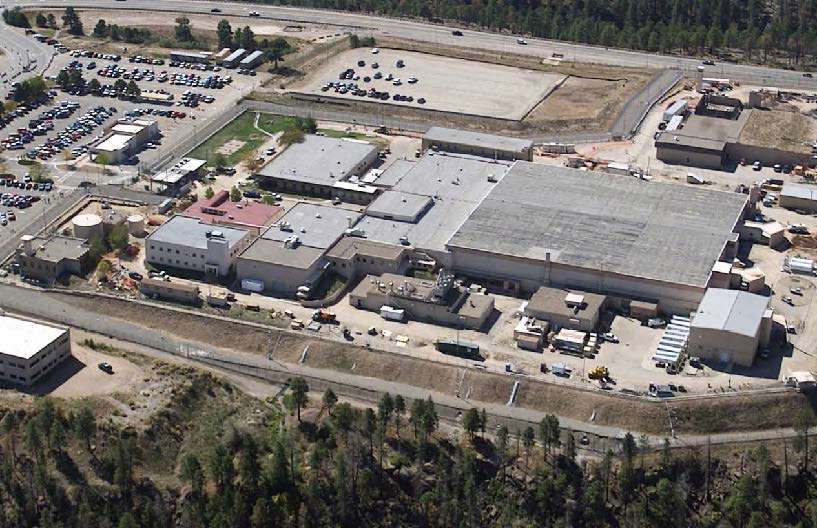
LOS  ALAMOS, N.M. – The National Nuclear Security Administration announced Thursday that New Mexico and South Carolina will share in the development of next generation nuclear weapons with expanded plutonium pit production.
ALAMOS, N.M. – The National Nuclear Security Administration announced Thursday that New Mexico and South Carolina will share in the development of next generation nuclear weapons with expanded plutonium pit production.
The “pit” is the core that triggers a nuclear warhead. The Trump administration wants to dramatically increase annual pit production, from 30 to 80. The NNSA says a troubled and not-yet-completed nuclear facility in South Carolina will be re-purposed to make 50 pits a year, while Los Alamos will make 30.
Nuclear watchdog groups are alarmed by the ramp-up. Jay Coghlan, director of Nuclear Watch New Mexico, insists the U.S. is setting a bad example.
NNSA: Plutonium Pit Production at Both Los Alamos and Savannah River Site
“To achieve DoD’s 80 pits per year requirement by 2030, NNSA’s recommended alternative repurposes the Mixed Oxide Fuel Fabrication Facility at the Savannah River Site in South Carolina to produce plutonium pits while also maximizing pit production activities at Los Alamos National Laboratory in New Mexico. This two-prong approach with at least 50 pits per year produced at Savannah River and at least 30 pits per year at Los Alamos is the best way to manage the cost, schedule, and risk of such a vital undertaking.”
-Joint Statement from Ellen M. Lord and Lisa E. Gordon-Hagerty on Recapitalization of Plutonium Pit Production
NB: Lisa Gordon-Hagerty is the Administrator of the NNSA (National Nuclear Security Administration); Ellen Lord is a DOD Under-secretary and Chair of the Nuclear Weapons Council (Gordon-Hagerty is also an NWC member).
Extraordinary: Koreas Pledge To Pursue Final Peace, Denuclearization
After a historic summit, North Korean leader Kim Jong Un and South Korean President Moon Jae-in have pledged to pursue “a nuclear-free Korean Peninsula” and to work towards “a permanent and solid peace regime.”
Growing Alarm Over Possibility of Nuclear War Between NATO and Russia
Read the recent articles linked below to get a feel for how alarmed some in the know are at this time. These concerns are not heard much on US mass media. You may find some alarmist, but the general drift is unmistakeable. And lets’ not forget that those who know, such as Former Defense Secretary William Perry, have been saying we are not alarmed enough, nowhere near enough. Perry: “The danger of a nuclear catastrophe is greater than during the Cold War. Our public is blissfully unaware.” (ref)
– Foreign Policy: On the Verge of Nuclear War
– Time: Mikhail Gorbachev: The U.S. and Russia Must Stop the Race to Nuclear War
– The Nation: Unproven Allegations Against Trump and Putin Are Risking Nuclear War
– Counterpunch: The Skripal Poisonings and the Ongoing Vilification of Putin
– Salon: Behind this week’s Russia headlines:
A mystery, a leap to conclusions and a fateful turn
How did we get to this point? Here’s some background:
– Andrew Lichterman: U.S.-Russia Nuclear Arms Racing: Still Crazy After All These Years
– Austin Long: Red Glare: The Origin and Implications of Russia’s ‘New’ Nuclear Weapons
Nuclear Fallout In US from Testing
USA Today reported on an unreleased federal study blaming fallout from worldwide nuclear bomb testing for at least 15,000 cancer-related deaths and more than 20,000 non-fatal cancers in U.S. residents born since 1951.
Nuclear News Archives – 2021
Nothing Found
It seems we can’t find what you’re looking for. Perhaps searching can help.
Nuclear News Archives – 2020
Nothing Found
It seems we can’t find what you’re looking for. Perhaps searching can help.
Nuclear News Archives – 2019
Nothing Found
It seems we can’t find what you’re looking for. Perhaps searching can help.
Nuclear News Archives – 2018
Nothing Found
It seems we can’t find what you’re looking for. Perhaps searching can help.

